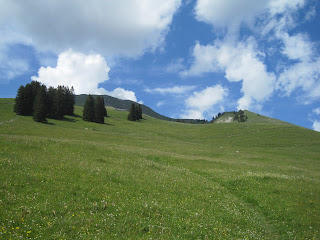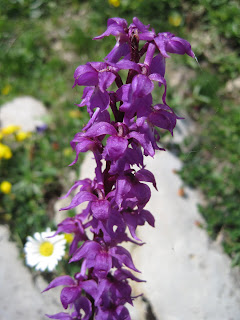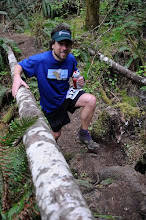Trail de Faverges 2011 race report
Ordinarily my race reports read something like a very boring choose your-own-adventure book.
1) I started conservatively since I was feeling a bit achy from last weeks efforts.
2) I started to feel better a few hours into it and then
3a) sped up and finished strong.
… or …
3b) or muddled my way through the last part.
Trail de Faverges went a bit different. The race went fine, lots of climbing and descent in a fairly short distance. I went easy and finished like I could have kept going, which is the training run I was going for. The effort however seemed almost seemed peripheral to how comically poor the trail construction was. Simply put, these were the worst trails I have ever run on … in my entire life. Congestion from the mud and a huge race field was so bad I often found myself walking down hills, unable to pass groups of a dozen or more.
Never mind the weather. It was terrible, but being from Oregon
After the 2nd of what should have been 3 climbs, the course descended a set of stacked switchbacks. Instead of shedding water at each switchback with a slight cut through, the water instead sloshed back across a banked turn to continue down the next switchback … over and over and over again, all the while gaining more and more water and washing mountains of sediment down an already rutted and deeply trenched trail. Think of a water park with banked turns specifically designed to capture and keep water and you have an idea of the center-line gullying that defined this course. I’m not at all averse to falling while running, it happens now and then, but the outsloping on side-hill traverses on this course was so poor that runners were falling quite unnecessarily.
Around mid-day the course was cut short and many of us missed the 3rd climb up to the final ridge (in the photo below the course goes clock-wise, and the ridge is up to the right of the final descent, which was instead routed down the valley). It wasn’t the rain that was the problem. It was simply the trail construction. The day for me was still a good training effort, but I never felt really in tune with the landscape. I prefer to run trails, and help maintain trails, in a way that minimizes the impact on the surrounding landscape, i.e. working with the rain and meeting mountains in a manner that reflects my philosophy: as a small and geologically insignificant sack of carbon and water cruising ridges and summits for no purpose other than a smile. As with the Leave No Trace ethic prominent in backpacking culture, I aim to leave any mountain no worse for the wear. The trails on this course were completely antithetical to any of these tenements, instead seemingly maximizing the sediment load into the creeks.
Garmin says 23 miles with 7600 ft of vertical. Very happy with the effort a week after a 23 miler with 8800 ft of vertical.
Photo credit: Trail de Faverges






























